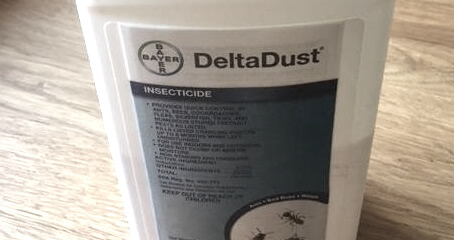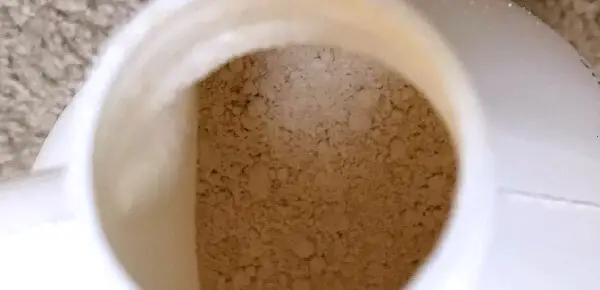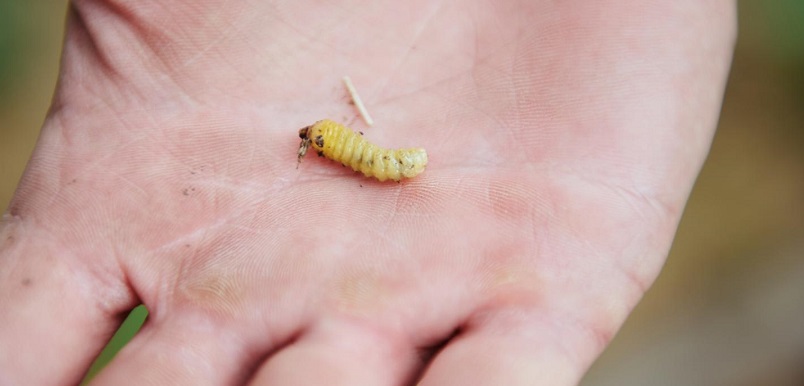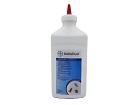Delta Dust vs Drione Dust

The main difference between Delta Dust and Drione Dust is that Delta Dust contains Deltamethrin as the active ingredient. In contrast, Drione Dust contains a combination of pyrethrins, piperonyl butoxide, and silica gel. Delta Dust is waterproof, while Drione Dust is not.
Drione Vs Delta Dust Table
This table will help you understand the difference between Drione Dust and Delta Dust.
Drione Dust | Delta Dust |
100% Waterproof Insecticide Dust | Odorless Insecticide Dust |
Active Ingredient is Deltamethrin 0.05% | Active Ingredient is Piperonyl butoxide 10% Pyrethrins 1% Silica gel 40% |
For Residential & Commercial use | For Residential & Commercial use |
1 LB. Can Covers 1,000 Sq. FT. | 1 LB of Delta Dust Covers About 2,000 Sq.ft |
EPA Registered Product | EPA Registered Product |
You Can Also in the Wet and Damp Places | Safe to Use Around Pets and Children |
It Can Keep Killing Insects for up to 8 Months | Effective for up to 6 Months if Left Undisturbed |
It can kills Ants, Bees, Bedbugs, Cockroaches, spiders, drywood termites, fleas, beetles, lice, pillbugs, scorpions, ticks, wasps, and more. | It Kills Ants, Bees, Bedbugs, Boxelder Bugs, Cadelles, Centipedes, Cheese Mites, Cigarette Beetles, Cockroaches, Spiders and Others |
Do Not Apply in or Around Ventilation, Vents, or Hvac Units, or Food Areas. Always Read the Entire Label Before Use!! | Do Not Apply in or Around Ventilation, Vents, or Hvac Units, or Food Areas. Always Read the Entire Label Before Use!! |
Active Ingredient
Delta Dust’s active ingredient is Deltamethrin at 0.05%. Deltamethrin is a synthetic pyrethroid insecticide known for its effectiveness on many household and agricultural pests.
Drione Dust contains 1% Pyrethrins, botanical insecticides derived from chrysanthemum flowers. It also contains 10% Piperonyl Butoxide, a synergist that enhances the effectiveness of Pyrethrins, and 40% Silica Gel as a carrier.
The combination of ingredients in Drione Dust allows it to work in multiple ways to kill insects.

For Use In
A key difference between the two dusts is that Delta Dust is waterproof while Drione Dust is not. Delta Dust can be applied in damp, humid, and exterior areas and still remain effective.
The waterproofing allows Delta Dust to be used in wet environments like sewers and drains. Drione Dust is intended for use in dry areas only.
Both dusts are approved for cracks, crevices, voids, attics, wall voids, and other confined spaces inside homes, warehouses, and commercial buildings.
Target Pest
Delta Dust and Drione Dust are labeled to control a broad spectrum of crawling pests like cockroaches, ants, silverfish, spiders, crickets, and stored product pests.
Delta Dust is also specifically labeled for bed bugs, fleas, ticks, flies, and bees. Drione Dust has additional directions for controlling clothing moths, carpet beetles, termites, and wood-boring beetles.
Both provide residual control of pests for months when left undisturbed in treated areas.
How They Work
Delta Dust is a non-repellent insecticide, so insects will walk through it without detecting it. Once exposure occurs, Deltamethrin disrupts the nervous system, causing paralysis and death within hours.
Drione Dust relies on both contact activity and repellency. The Pyrethrins attack the insect nervous system. The Silica Gel absorbs the outer waxy layer of the insect’s exoskeleton, leading to dehydration. Insects detect and avoid the dust.

Where To Use
Delta Dust is approved for use in USDA-inspected food plants, including meat, poultry, and egg processing plants. This makes it useful for pest control in sensitive commercial food facilities.
Drione Dust is also labeled for use in food handling establishments but has some restrictions regarding application around food contact surfaces and equipment.
Both dusts can be applied in cracks, voids, attics, machinery, and other locations in industrial sites, warehouses, restaurants, schools, hotels, food processing plants, and more.
Coverage Area
One pound of Delta Dust covers approximately 2,000 square feet, while one pound of Drione Dust covers around 1,000 square feet. The exact coverage will depend on factors like how deep and tightly the dust is applied.
Applicators should follow label directions to ensure proper coverage levels and application methods. More frequent applications may be needed in areas prone to getting wet or dusty.
Low Odor
Delta Dust is virtually odorless, providing discreet pest control. Drione Dust is also low odor, with a slightly musty smell from the Pyrethrins.
The light smell dissipates over time. Since the dusts are lightly applied into cracks and voids, they are not likely to produce much odor in the occupied space anyway.
The low odor makes both suitable for use in sensitive accounts where scented sprays or strong odors are not desired.

Long-Lasting Residual
When left undisturbed in protected void areas, both Delta Dust and Drione Dust can provide residual insecticide activity for months.
Delta Dust lasts up to 8 months, while Drione typically offers six months of control. The waterproof nature of Delta Dust improves its longevity in damp areas prone to insect infestations.
The residual allows for long-term management with fewer applications compared to spraying alone. Monitoring and touch-up applications may be needed over time.
Dusting Application
Delta Dust and Drione Dust can be applied to voids, cracks, and crevices using hand bulbs or power dusters. Small hand dusters allow precise placement in confined spaces.
Power dust applicators provide larger volume discharge for coverage of attics, wall voids, underground services, and other large areas.
The dry dust formulations are easier to use in tight spaces than spraying liquid insecticides. Care should be taken to apply light, even layers of dust, according to the label directions.
Our Observation
Based on our observation, Delta Dust is the superior insecticide dust compared to Drione Dust. Delta Dust contains a more potent active ingredient, controls a broader spectrum of pests, and provides a longer residual of up to 8 months.
It is approved for use in commercial kitchens and food areas, which Drione Dust is not. The odorless and non-staining formulation makes Delta Dust the better choice for indoor use.
While both products are effective, the advantages of Delta Dust, including better pest control, longer residual, and food area approval, make it the best overall recommendation for an insecticide dust.

James E. Butkovich, Pest control maven with a knack for eco-friendly & Chemical solutions. Blogger with a mission to make homes pest-free, one post at a time.

